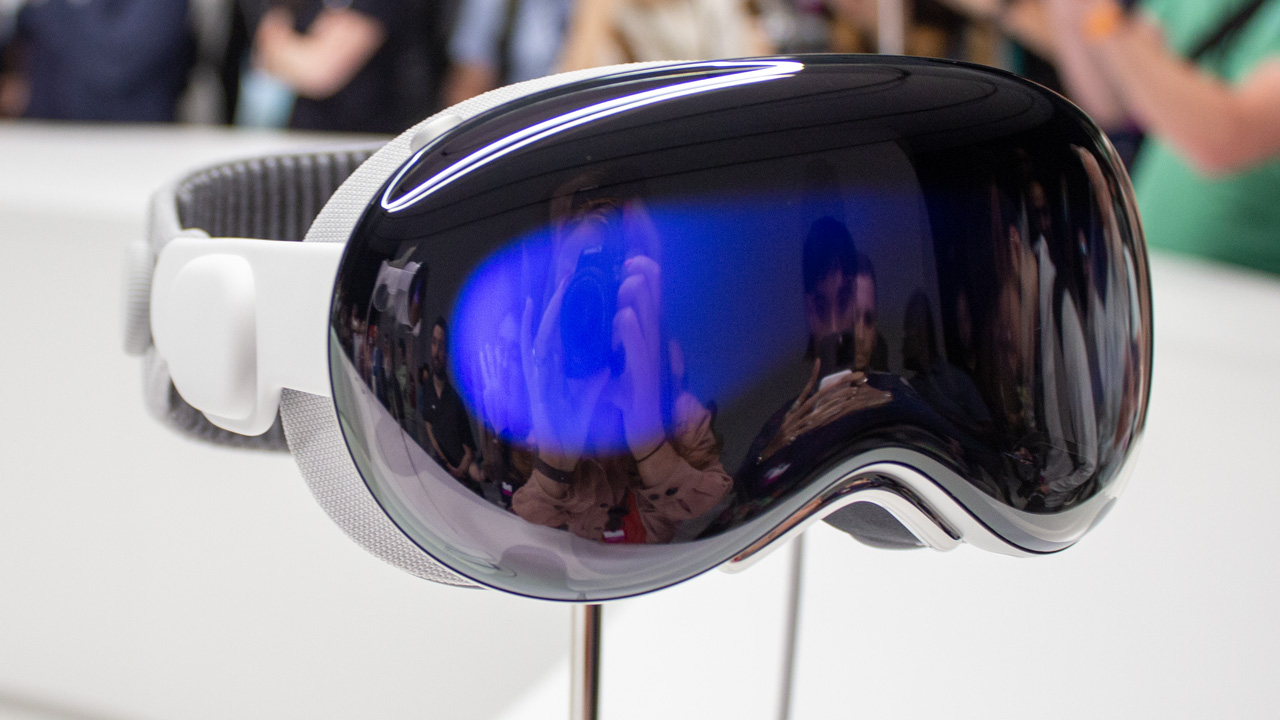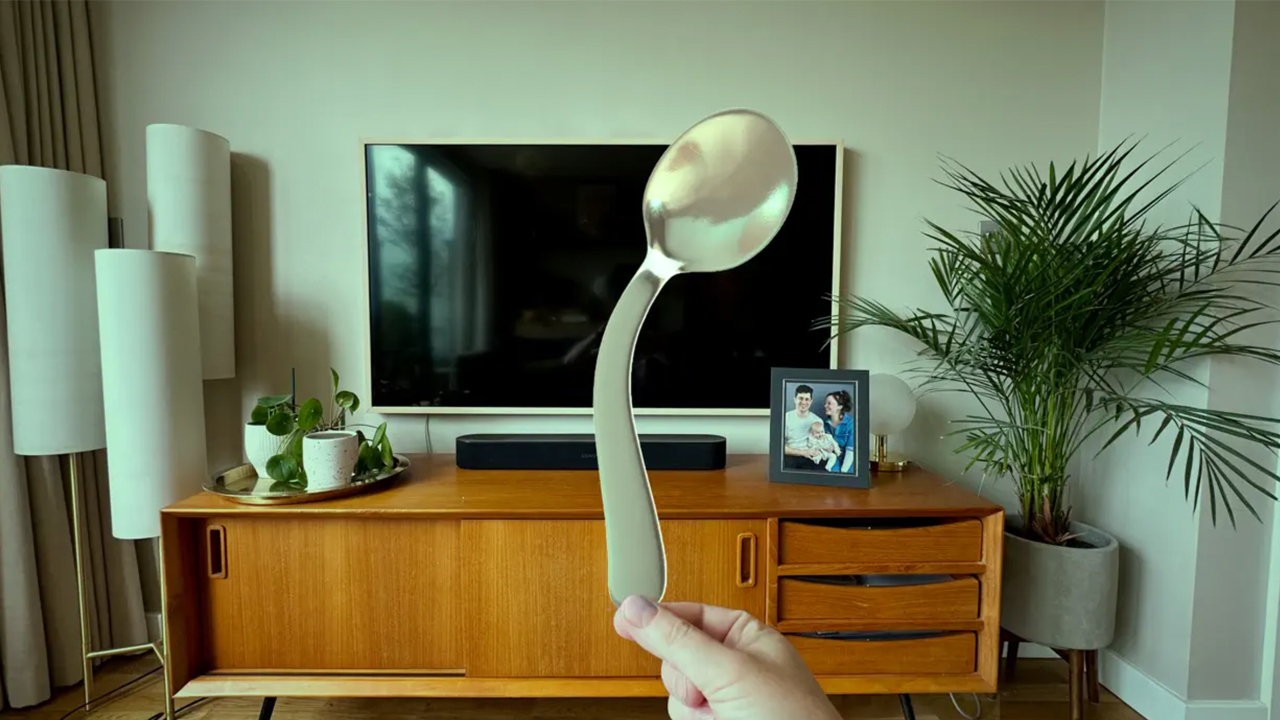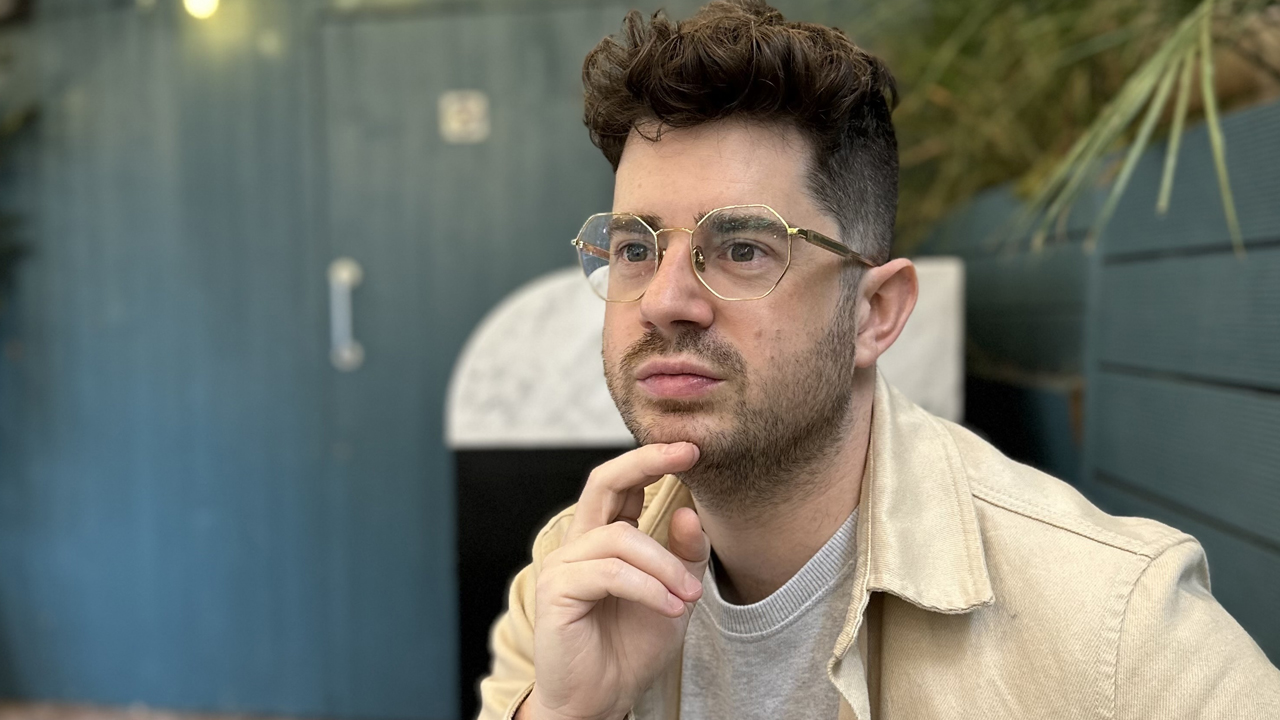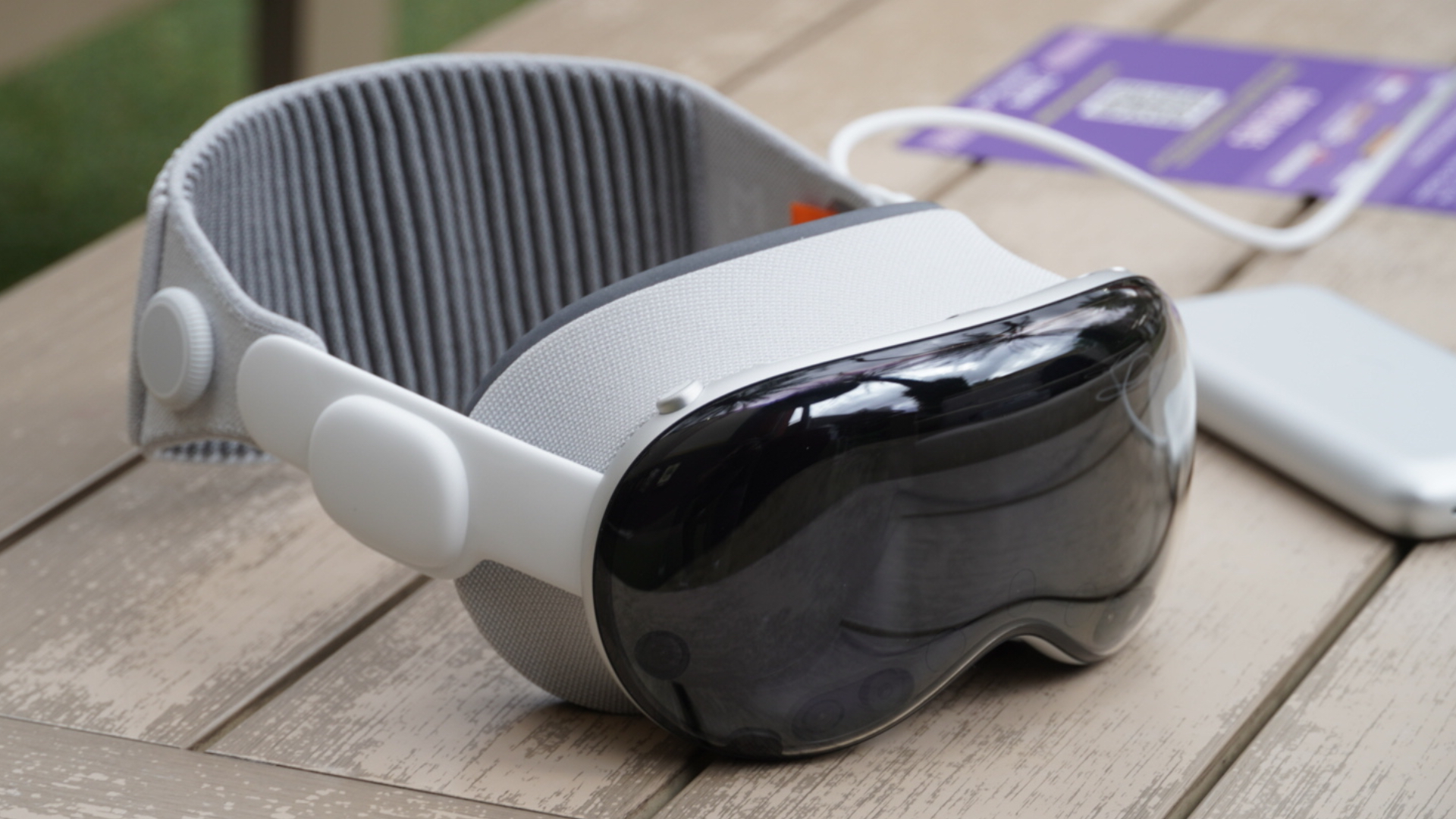
For a device that Apple is hoping will become the next big thing in computing, the Vision Pro is one of the most difficult-to-acquire gadgets on the market right now.
Though it’s now on the cusp of an international rollout, it’s spent the first five months of its shelf life as a US exclusive. The AR / VR hybrid wearable is also one of the priciest bits of consumer tech gear a person can purchase at the moment, with an eye-watering price tag of $3,499 / £3,499, putting it out of reach of many would-be buyers.
Those two factors combine for a difficult scenario for the device’s app development scene — Vision Pro needs apps in order for it to be successful… but how can you make a great app without access to the device it’s going to be launching on?
Where there’s a will, there’s a way. I sat down with Dudley Denman-Rees, the solo developer behind D Digital Creative, and the company’s debut app offering, There Is No Spoon. A quick-fire AR experience exclusive to the Vision Pro, it takes inspiration from the mind-bending, spoon-warping scene from The Matrix film. Even more mind-bending? Denman-Rees built the app without access to a Vision Pro, without ever having built an app before, and all within just a few short months.
Here’s how he did it — and some top tips for those who would similarly like to try their hand at Vision Pro app development.

An idea, intensive study, and a growing community
An early admission here — though Denman-Rees had never put out an app before, his background was in development, skilled in Javascript, HTML, CSS, and the React library.
“I was working as a front end developer, building websites and apps. That's my expertise,” he explains over a coffee. Denman-Rees is animated and confident in conversation — unsurprising, given the sort of career leap he’s made that many would find daunting.
“Like with many technology companies, redundancies came to our office. This is back in February, and I'd only been there nine months. And so I just felt a little bit like, well, maybe I'd like to be doing something else.”
That something else was app development for the newly launched Vision Pro. With a five-month-old baby at home, Denman-Rees took the redundancy and embarked on an “intensive” period of study to get up to speed with the requirements of Vision Pro development. Most notably, learning Apple’s own Swift development language, something Denman-Rees had previously “put on a pedestal”.

“It's been an interesting experience, because I think to go in and properly learn Swift will take a really long time,” says Denman-Rees.
“I've had to be a bit more ruthless than that. I've had to go, 'I want results in my app'. So I need to learn the specific bits to make my app. There are definitely times where I've been looking at my code and I'm like, I know that this could be a lot better, but I just need to be practical here.”
With the free XCode developer tool downloaded, and its built-in ‘Simulator’ simulation environment letting him visualize how a Vision Pro app might actually work on real hardware, Denman-Rees got to work. There Is No Spoon was designed to tap into the “cinematic” and “emotional” potential Deman-Rees saw in Vision Pro, looking to tap the “wow factor” of the hardware with some trippy visuals, but on a scale achievable by a solo dev.
Denman-Rees took advantage of the opportunity to take part in a developer lab session at Apple’s Battersea HQ in London, UK (the only time he’s even had an opportunity to fleetingly touch the Vision Pro headset), but that support aside, he’s been more or less on his own. The virtual exception? The growing number of Redditors and Discord server users dedicated to sharing tips and educating each other around the complexities of Vision Pro development.
"Going from working in a company and obviously being on Slack every day to being freelance can leave you feeling a little bit adrift."
“Discord was really good. On the server I’m active on there are people who own Vision Pro in the UK — I think they own them for their companies. So that was really nice — going from working in a company and obviously being on Slack every day to being freelance can leave you feeling a little bit adrift. And so to suddenly be in a kind of Slack-like environment where people are posting memes to each other and chatting was a great way to connect and learn.”
That connection to the wider community proved vital for getting around the simulator’s limitations — without a Vision Pro, the simulator couldn’t account for the hand-tracking moments required for Denman-Rees’s app, and also wasn’t useful for testing against the upcoming VisionOS 2 launch that was breaking There Is No Spoon. Those overseas owners and UK early adopters become Denman-Rees’s TestFlight guinea pigs, with TestFlight allowing the developer to distribute early versions of his app among the few with access to the hardware.
Just a few short months after taking the plunge, There Is No Spoon is up for purchase on the Vision Pro app store. But in a wild twist… Denman-Rees still hasn’t been able to try his completed app on a Vision Pro headset. Based out of the UK, he’s had to wait for this week’s international rollout for the chance to try out the completed app. But the accomplishment has been worth the hard work.
“I feel an immense sense of pride, an immense sense of pride,” says Denman-Rees. “It's great, it's delightful for it to be there as the first app I've launched. And it feels like I'm getting in on Vision Pro development early. And that's really exciting.”

6 top tips for first-time Vision Pro app developers
Looking to get started? Here’s what Dudley Denman-Rees says you’ll need to consider to get off to a great start with your Vision Pro development journey.
Have a great idea:
My angle is to think of what you would like to do in spatial computing specifically. Why 3D? Why immersive? I think that for me is the first thing — and people would disagree with me about that. I was speaking to somebody on Reddit who said, “What is the point? Why spoon bending?” I think in spatial computing, it's got to be about immersion. And so I think you should ask yourself, what would I like to do in 3D space?
No Vision Pro? Xcode simulator and YouTube are your friends:
100% the first thing you should do is download Xcode for free and run the simulator. Because when I started, I had no idea what anything even looked like in Vision OS, beyond a few screenshots of the icons. But like, how do you go into an app? How do you come out of an app? You've got no idea. So definitely get Xcode with the simulator — it's free!
Beyond that, try and watch walkthroughs of people using Vision Pro apps on YouTube. For instance, if you've got an app that conveys three pieces of information, you’ll have no idea how somebody might go from one piece of information to another, just some really basic UI interface stuff. You can learn a lot just by watching walkthroughs and then experimenting with your findings.
Understand state management:
Getting a little bit technical, there's a thing known as “state management” that I had from running web apps that was really relevant. It's quite a simple idea — it's just changing the state of something basically. So for example, “the spoon is in the distance” would be state one, and then “the spoon is in front of you” is state two. I was really grateful that it was part of the process when coming into Swift and Vision Pro development — so, “the person's head is upright” is state one, “the person's head is tilted his state two”.
TL:DR? Make sure you’re able to define and understand the different steps and interactions a user may make with your app, and the journey and parameters needed to go from one stage to the next.
ChatGPT and Stack Overflow might be just as useful as Apple’s developer tutorials:
During the Worldwide Developers Conference, Apple runs a lot of little lessons and workshops. You can watch the videos and you can download code snippets as you go along, and paste those into your own app to test it. That's really helpful, because you can go through them in your own time carefully and go, “Well, what does that do? What does that do?”
And then there’s also Stack Overflow. There's a small number of Apple Vision Pro developers there who are putting up answers that are really helpful and offering code blocks. And again, you can take those, put them into your app, go through them really carefully.
But ChatGPT these days is my number one colleague. Maybe people will hate that, but honestly, it's so useful, even if just for talking dev theory with it. I haven't found it as knowledgeable in Swift as I have in other languages, so it often gives you errors. And it won't write the code for you. But you can talk theory with it. But you can ask basic questions like, where do I put my files? What do I call the folders, the directories? ChatGPT is really helpful for that sort of thing.
Recruit some Vision Pro-owning testers:
Go back to Reddit, go back to Discord, be nice about it and try to recruit some testers. Ask somebody to be kind to you and to give their time up to test your thing. And I think because people are excited about their device, they want to help something that’s new, so that's cool. People are excited to see what developers are working on. And I think with the international launch, there will be many more people interested in testing. There'll be more devices, particularly in the UK. So you, this time next week, we may know somebody who owns one or a company that owns one, so go speak to people!
Be prepared for plenty of paperwork:
Getting your app on the App Store is hard work, whether you're building an iOS app or a Vision Pro app. If you're registering a developer account as a company for the first time, you have to have a company website, which I didn't have. You have to have a page for your app. You have to have a privacy policy for your app. So suddenly, you go from just developing an app to having to roll out a website too — and you don't want it to look like complete crap! Then you have to do some fairly intimidating paperwork, about selling the app in America, and a treaty that we have here in the UK with America about tax. YouTube comes to the rescue, where you’ll find some helpful, but not particularly charismatic, accountants who walk through the process.







